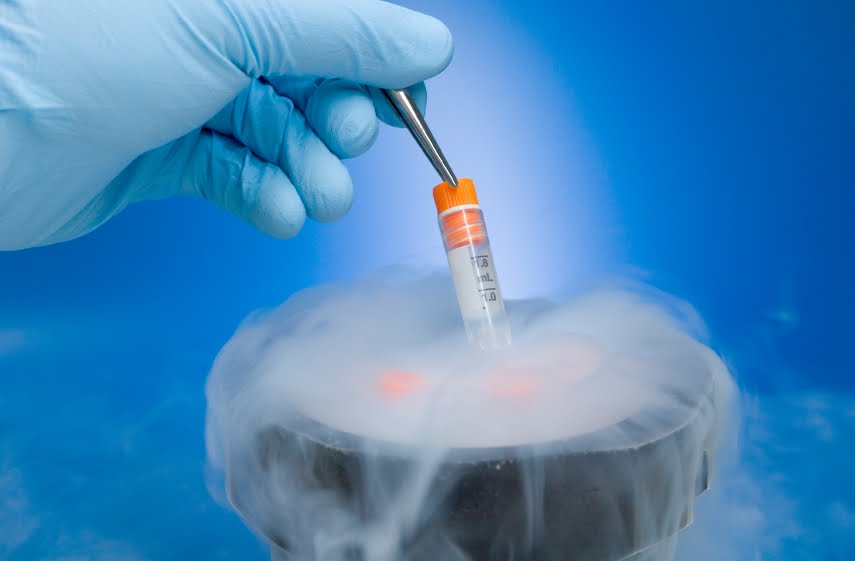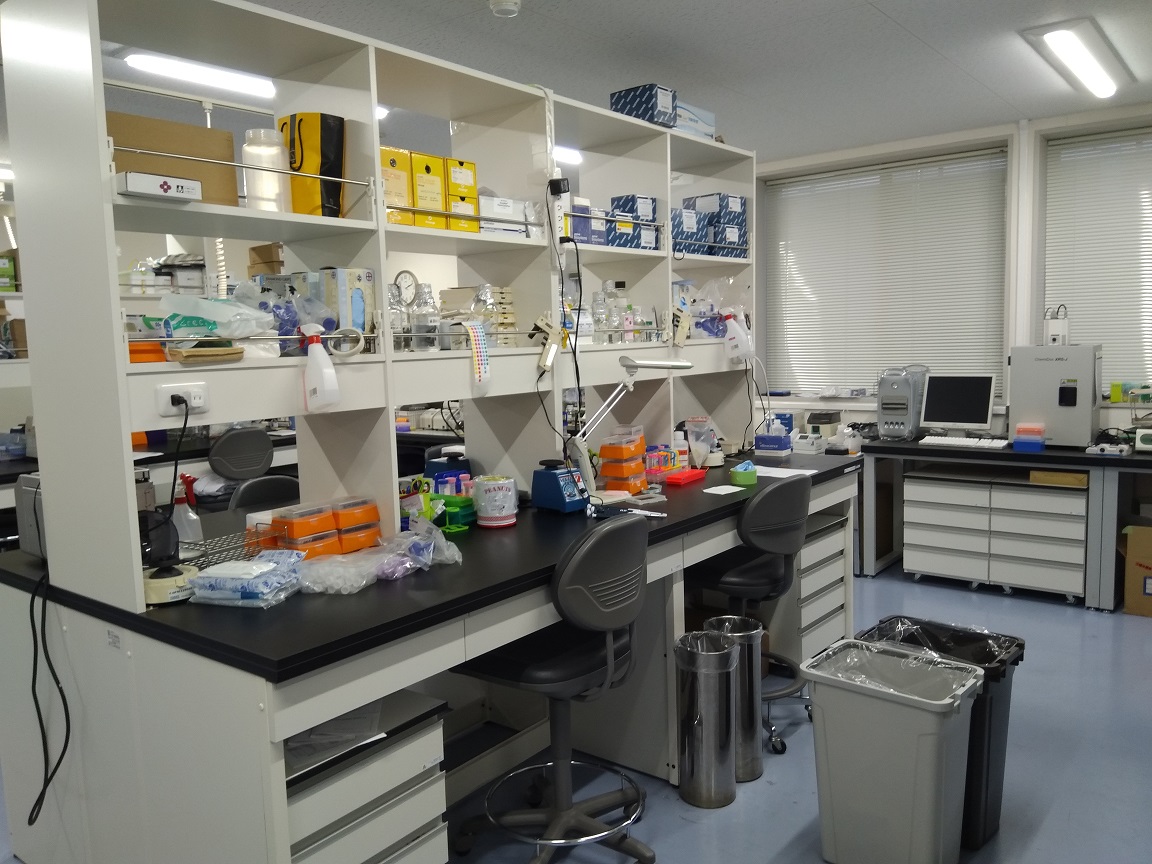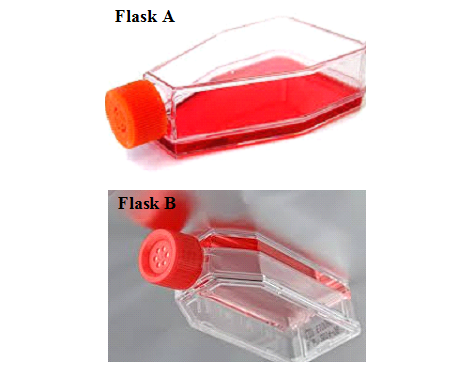The procedures described below are guidelines of the American Type Culture Collection (ATCC). They are specific guidelines that will help you to handle your microbial cells efficiently after procurement, in order to get the best result upon their usage for your experiment. Though the procedure of thawing, reviving or handling microbial cultures may vary from one laboratory to another; you are advised to stick and follow the already established microbial culture reviving protocol of your laboratory while taking the guides described here as a backup or foundational steps.
REVIVING BACTERIA
The preferred and convenient method for the preservation of bacteria is freeze–drying. However, some bacteria do not survive freeze-drying very well and are frozen instead. For freeze dried cultures, using a single tube of the recommended media (5 to 6 mL), withdraw approximately 0.5 to 1.0 mL with a Pasteur or 1.0 mL pipette. Use this to rehydrate the entire pellet, and transfer the entire suspension back into the culture broth tube and mix well. The last few drops of this suspension may also be transferred to an agar slant.
This is applicable to aerobic bacteria. But for anaerobic bacteria, it is important to note that anaerobic cultures must be rehydrated only in an anaerobic environment. The viability of the bacterial cells decreases rapidly (for anaerobic bacteria) if the vial or tube is rehydrated in an oxygenic environment. Incubate cultures under the appropriate conditions. Given proper treatment and conditions, most freeze-dried cultures will grow out in a few days. However, some may exhibit a prolonged lag (exponential) period of growth and should be given twice the normal incubation time before discarding as nonviable cells.
REVIVING BACTERIOPHAGES
Prior to rehydrating the phage or bacteriophage, prepare an actively growing broth culture of the bacterial host. Rehydrate the freeze-dried phage specimen aseptically with 1.0 mL of appropriate broth and mix well. Use 0.1 mL of this mixture for the preparation of a new high-titer phage suspension. Preserve the remaining mixture in a sterile screw-capped vial at 2°C to 10°C. Ensure to always refer to the product sheet of the procurement company that supplied the pahge for specific information on how to propagate the phage.
REVIVING FUNGI
Prior to rehydrating your fungi, refer to the product sheet for any specific instructions regarding the handling of your culture. For freeze-dried fungi, use a Pasteur pipette to add approximately 0.5 to 1.0 mL sterile water to the inner vial of a double vial or to a serum vial. Then, draw up the entire contents into the pipette and transfer to a test tube with about 5 to 6 mL sterile water.
Allow the yeast or fungus to rehydrate for at least a couple hours before transferring to broth or solid agar. Longer periods of rehydration (e.g., overnight) might increase the viability of some fungi. Incubate at the recommended temperature. Keep in mind that some cultures may exhibit a prolonged lag period and should be given twice the normal incubation time before discarding as nonviable. Save the mixture of lyophilized material and water until you know you have growth.
REVIVING PLANT VIRUSES
Plant viruses are usually distributed in freeze-dried plant tissues within single, sealed vials. For increased stability of the contents, vials should be stored at -20°C prior to use. Vials should be opened carefully, removing the metal retaining cap and the rubber stopper. If the vial has been flame-sealed, it may be opened according to the directions on the document entitled, “How to Open Freeze-Dried Vials”.
For tissue reconstitution and inoculum preparation, the contents of the vial should be placed in a precooled (4°C) mortar with 2 to 3 mL of an inoculation buffer (e.g., 0.05 M sodium phosphate buffer, pH 7.0, with 10 mM sodium sulfite). A pestle is used to thoroughly triturate the tissue for inoculum preparation.
The inoculum may be rubbed onto host plants using a sterile cotton swab and a fine abrasive, such as 500 to 600 mesh carborundum (silicon carbide) or celite (diatomaceous earth). The abrasive may be added to the inoculum (50 to 100 mg/mL) or dusted onto the plants prior to inoculation. After inoculation, the plants should be sprayed with water to remove buffer salts and abrasive.
REVIVING ANIMAL VIRUSES
Prior to rehydrating the culture, prepare the appropriate propagation host and check the virus titer listed on the certificate of analysis to determine the amount of virus needed. For tissue culture-adapted strains, initiate the recommended propagation host and grow the monolayer to an appropriate confluency. For strains propagated in chicken eggs, prepare the chicken egg in advance by incubating the egg in the appropriate temperature and atmospheric conditions.
Additionally, all eggs should be candled to ensure viability and properly developed embryos. [SEE VIROLOGY SECTION ON THIS WEBSITE FOR FULL DETAILS ON CANDLING TECHNIQUE] To rehydrate the virus, aseptically add an appropriate volume of sterile phosphate buffered saline (PBS) at room temperature and mix well. Dilute the sample in viral growth medium and inoculate the recommended propagation host according to the recommended infection conditions as described on the product sheet.
REVIVING CULTURES IN STOPPERED SERUM VIALS
Freeze-dried bacteria and fungi supplied in stoppered vials or tubes should be rehydrated with 0.5 mL of the appropriate broth (for bacteria) or sterile water (for fungi) prior to following the directions provided above for reviving fungi and bacteria. When given the proper treatment and conditions, most freeze-dried cultures will grow out in a few days. However, some may exhibit a prolonged lag period and should be given twice the normal incubation time before discarding as nonviable.
THAWING FROZEN MICROORGANISMS
Frozen cultures should be processed immediately upon arrival. If that is not possible, store vials in liquid nitrogen vapor. Alternatively, the frozen material can be stored in a mechanical freezer between -70°C and -80°C for short periods (1 to 5 days). Frozen cultures are stable in the long term only when stored at -130°C or below. Viability of cultures stored between -80°C and -130°C will vary with the nature of the cryoprotective agent and the strain and can only be determined empirically.
One of the most common mistakes when storing frozen material is to place it at -20°C (the freezer compartment of a conventional refrigerator-freezer). Never store frozen cultures in this manner. Storage at this temperature for even short periods will result in rapid loss of microbial cell viability.
REVIVING FROZEN BACTERIA
For frozen cultures, thaw or defrost the bacterial strain using gentle agitation in a water bath that is set to 25°C to 30°C. You can thaw the cells gently by allowing cells to thaw on its own in the water bath. Ensure to thaw the cells half way and allow the defrosting to complete on its own on the bench prior to using the cell. Thawing will be rapid; approximately 2 minutes or until all ice crystals have melted.
For anaerobic cultures, thaw the vial only in an anaerobic environment; the viability of the cells decrease rapidly if the vial is thawed in an oxygenic environment. Once the vial is thawed, decontaminate the outer surface using 70 % ethanol. The entire contents of the vial can then be aseptically transferred to a test tube containing 5 to 6 mL of the recommended medium. Additional test tubes can be inoculated by transferring 0.5 mL of the culture of the primary culture to additional secondary cultures.
Incubate the culture under the appropriate temperature and atmospheric conditions. The incubation period will vary between strains, and is listed on the product sheet. Some cultures may exhibit a prolonged lag period and should be given twice the normal incubation time before discarding as nonviable cells.
REVIVING FROZEN BACTERIOPHAGES
Prior to thawing the phage, prepare an actively growing broth culture of the bacterial host. Rapidly thaw the frozen phage specimen in a water bath that is set to 25°C to 30°C. Thawing will be rapid; approximately 2 minutes or until all ice crystals have melted. Once the vial is thawed, decontaminate the outer surface using 70 % ethanol.
Aseptically add 0.5 mL of appropriate broth to the liquid cryovial and mix well. Use 0.1 mL of this mixture for the preparation of a new high-titer phage suspension. Preserve the remaining mixture in a sterile screw-capped vial at 2°C to 10°C. Refer to the product sheet for specific information on how to propagate the phage.
REVIVING FROZEN FUNGI
Prior to thawing your fungi, refer to the product sheet for any specific instructions regarding the handling of your culture. Thaw the fungal culture in a water bath that is set to 25°C to 30°C. Thawing will be rapid; approximately 2 minutes or until all ice crystals have melted. Immediately after thawing, wipe down the ampule with 70 % ethanol and aseptically transfer at least 50 µL (or 2-3 agar cubes) of the content onto a plate or broth of the recommended media.
Incubate the culture under the appropriate temperature and atmospheric conditions, and inspect for growth of the inoculum/strain regularly. The signs of viability will vary between strains, and is listed on the product sheet. Some cultures may exhibit a prolonged lag period and should be given twice the normal incubation time before discarding as nonviable.
REVIVING FROZEN PROTISTS
Consult the product sheet for specific instructions regarding the handling of your culture. In general, frozen protists cultures should be thawed rapidly. For most taxa, quickly transfer the frozen ampule directly to a 35°C water bath and immerse it so that the lip of the ampule remains just above the water line. Thawing time is approximately 2 to 3 minutes or until all ice crystals have melted.
Do not agitate the ampule. Do not leave the ampule in the water bath after it is thawed. Immediately after thawing, aseptically transfer the entire contents to a single small culture vessel (T-25 tissue culture flask, 16×125 mm screw-capped test tube, agar plate) of the recommended medium and incubate at the appropriate temperature.
REVIVING FROZEN ANIMAL VIRUSES
Prior to thawing the culture, prepare the appropriate propagation host and check the virus titer listed on the certificate of analysis to determine the amount of virus needed. For tissue culture-adapted strains, initiate the recommended propagation host and grow the monolayer to an appropriate confluency. For strains propagated in chicken eggs, prepare the chicken egg in advance by incubating the egg in the appropriate temperature and atmospheric conditions. Additionally, all eggs should be candled to ensure viability and properly developed embryos.
Thaw the vial of frozen virus via gentle agitation in a water bath set at 37°C. Thawing will be rapid; approximately 2 minutes or until all ice crystals have melted. Once thawed, decontaminate the outer surface using 70 % ethanol. Inoculate the recommended propagation host and propagate the virus according to the recommended infection conditions as described on the product sheet.
Molecular Biology Materials
For clones shipped as glycerol stocks at room temperature, transfer material to test tubes of fresh media as soon as possible. Cultures may be stored at 4°C for no longer than two weeks. For longer term storage, the vials can be stored at -80°C. Avoid multiple freeze thaws. For freeze-dried or frozen hosts and plasmids in hosts, refer to the Bacteria section described above.
THAWING FROZEN CELL LINES
Consult the product sheet for specific instructions regarding your cell line. In general, cell lines should be thawed rapidly. Place the ampule in a water bath at 37°C and agitate until the last bit of ice just thawed. Transfer the contents to a culture vessel with 10 volumes of appropriate medium. This ten-fold dilution will lower the concentration of the cryoprotective agent, such as dimethyl sulphoxide (DMSO), which could harm the cells.
Centrifuge the cell suspension at approximately 1000 rpm or 200 × g for 5–10 minutes, then decant the supernatant without disturbing the cell pellet. Gently resuspend the cells in complete growth medium, and transfer the cells to the appropriate culture vessel. Some cell lines have specific procedures for removing the cryoprotectant, refer to the product sheet for details.
To insure the highest level of viability, thaw the vial and initiate the culture as soon as possible upon receipt. If continued storage of the frozen culture is necessary, store in liquid nitrogen vapor phase and not at -70°C. Storage at -70°C will result in loss of cell viability.
REFERENCES
American Type Culture Collection (ATCC)
www.atcc.org
Discover more from Microbiology Class
Subscribe to get the latest posts sent to your email.





